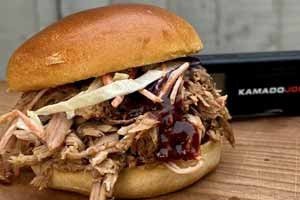Easy, tender BBQ pulled pork, loaded into buns with coleslaw and BBQ sauce.
How to Use a Meat Thermometer Accurately
Working out how to use a meat thermometer accurately might sound simple, but it can be surprisingly easy to do incorrectly. Ensuring that readings are taken properly is essential for making sure that your food is perfectly cooked, safe and delicious, every time.
How you use your food thermometer to take a temperature will depend on the type of food you are measuring, and how accurate you need it to be. For example, it’s really important to take an accurate reading when cooking a medium rare steak to ensure it’s spot on, whereas soups and reheated foods require less accuracy because they only need to reach 74°C or higher.
Read on to learn how to use a meat thermometer to take the temperatures of different types of food.
Key Temperatures for using a meat thermometer
Do you know what temperatures to cook your food to? Find all of the temperatures you need, from meat and reheating to baking and confectionery, on this handy page.
The guide is also available as a fridge magnet so they’re always on hand in the kitchen!
1. How to use a meat thermometer for solid foods
Whether heating or cooling solid food, the centre of the thickest portion will be the slowest to change in temperature. Therefore, this is the area you will need to measure to ensure it has fully cooked or cooled. To locate the centre of a food such as a piece of meat, use your thermometer to slowly insert the probe into the meat and watch how the temperature drops as you approach the centre, before rising again as you move past it. This will help you to locate the lowest temperature of the meat, ensuring that this reaches your safe or desired temperature.
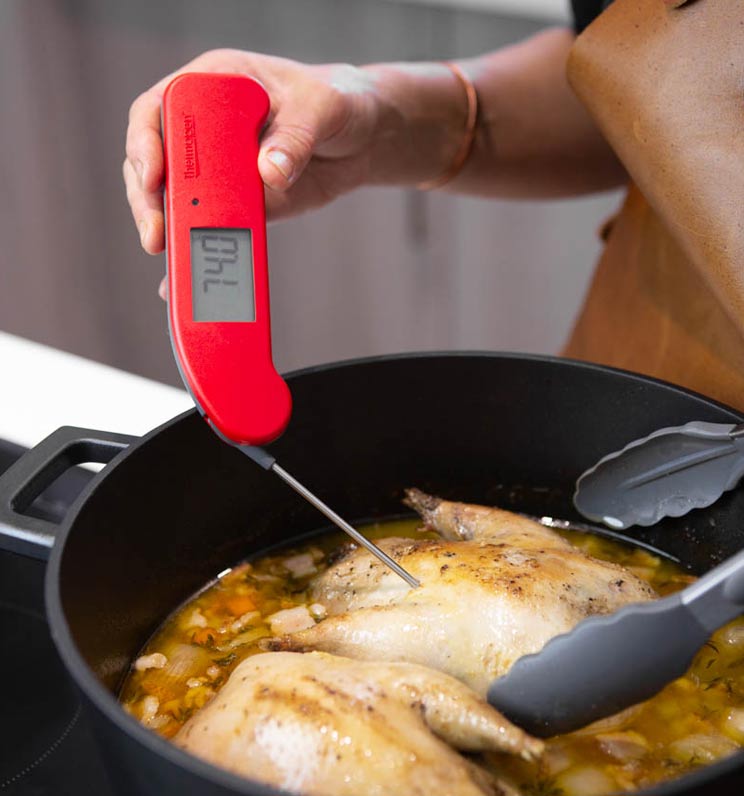
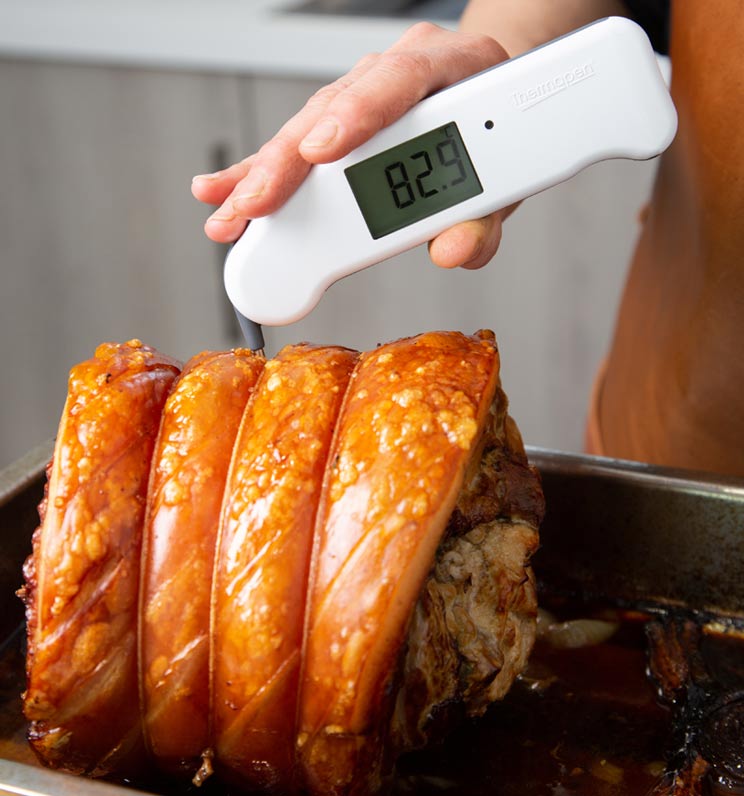
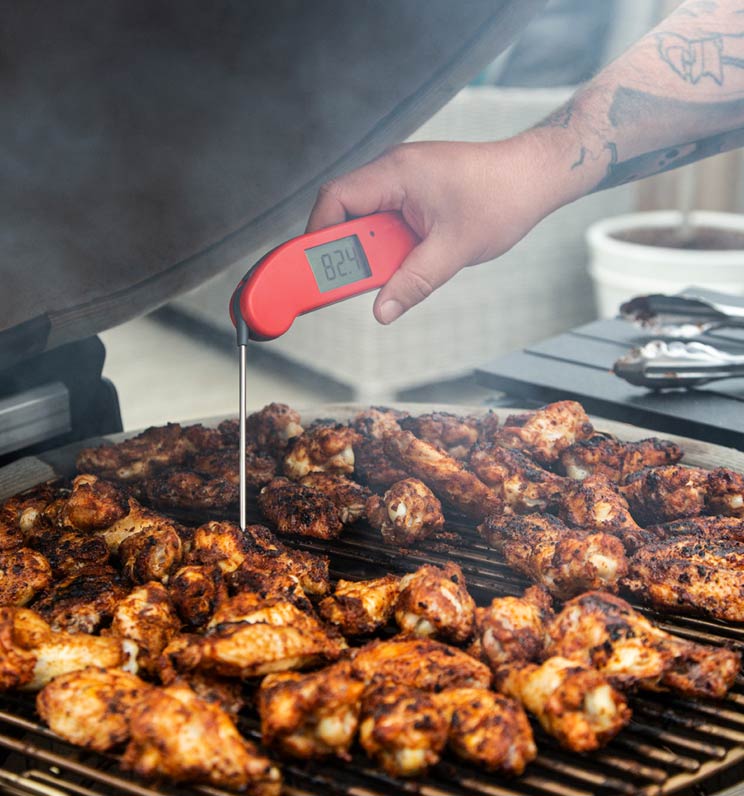
Spot check large pieces of meat
When measuring the temperature of whole birds, like chicken, you want to put the thermometer probe in the thickest part, where the breast meets the thigh. Meat like this will usually vary in temperature considerably throughout, providing very different readings in the legs to the breast. It’s a good idea to spot check large pieces of meat to ensure they have come to temperature all over, while also trying to avoid bones or gristle as this can provide an inaccurate reading.
For smaller, thinner pieces of meat
Such as burgers, steaks and chicken breasts or wings, it’s important to make sure that the probe does not go all the way through the meat and onto the surface beneath. Holding the meat between a pair of tongs while using your meat thermometer to take the temperature from the side instead of above can help to prevent this. Our Thermapen thermometers feature a type K thermocouple probe that only needs to be inserted 3 mm into foods to get an accurate reading, making them ideal for smaller cuts of meat.
2. How to use a food thermometer for liquid foods
Taking an accurate temperature reading of liquid foods is slightly different to solids because they heat and cool by convection rather than conduction. Therefore, it’s not simply a matter of taking a reading from the centre, but by checking the liquid as a whole. The best way to do this is by stirring the liquid first, and then stirring the thermometer probe through the liquid, watching the temperature change as it moves through the food.
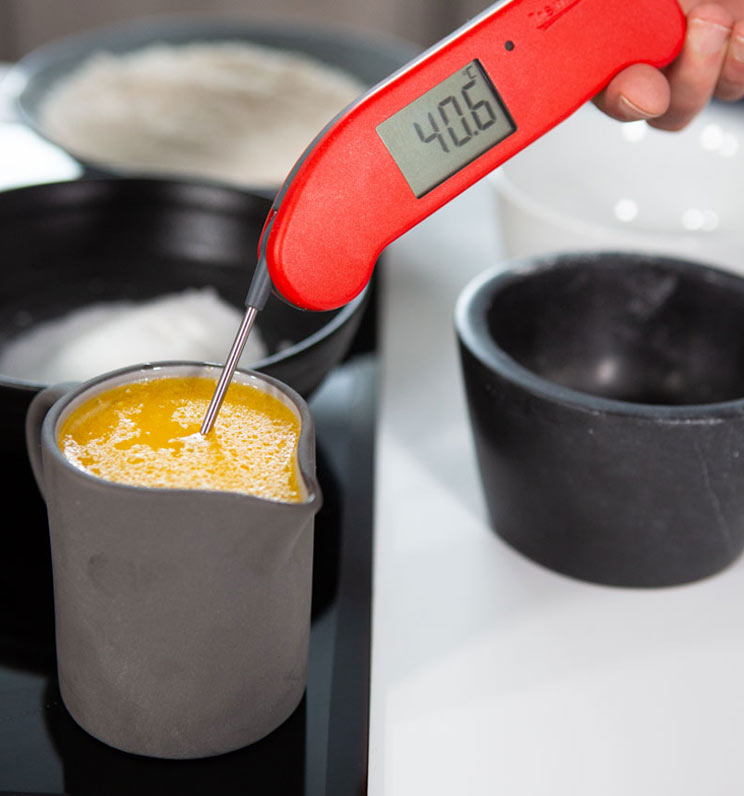
3. How to use a leave-in meat thermometer
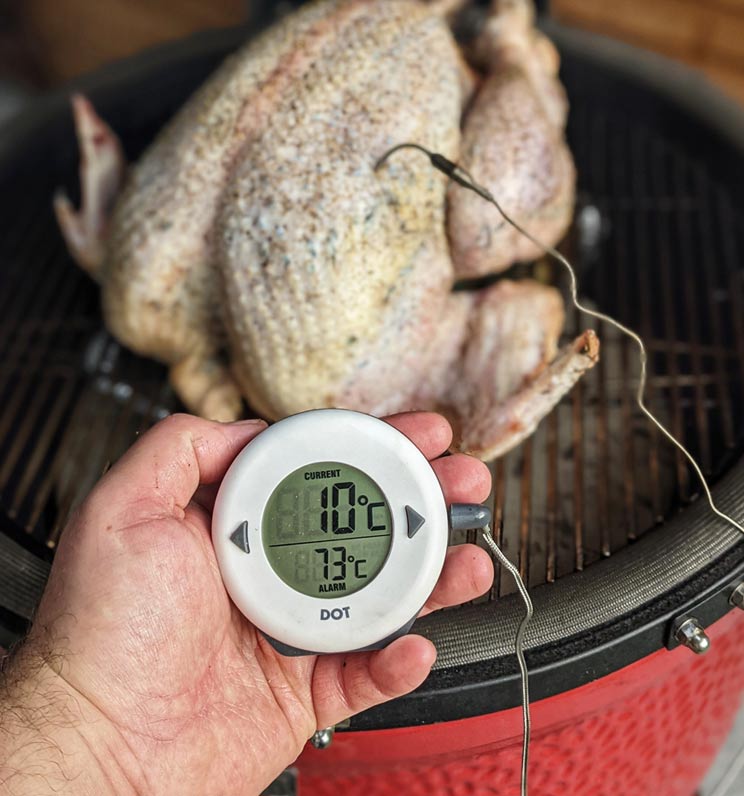
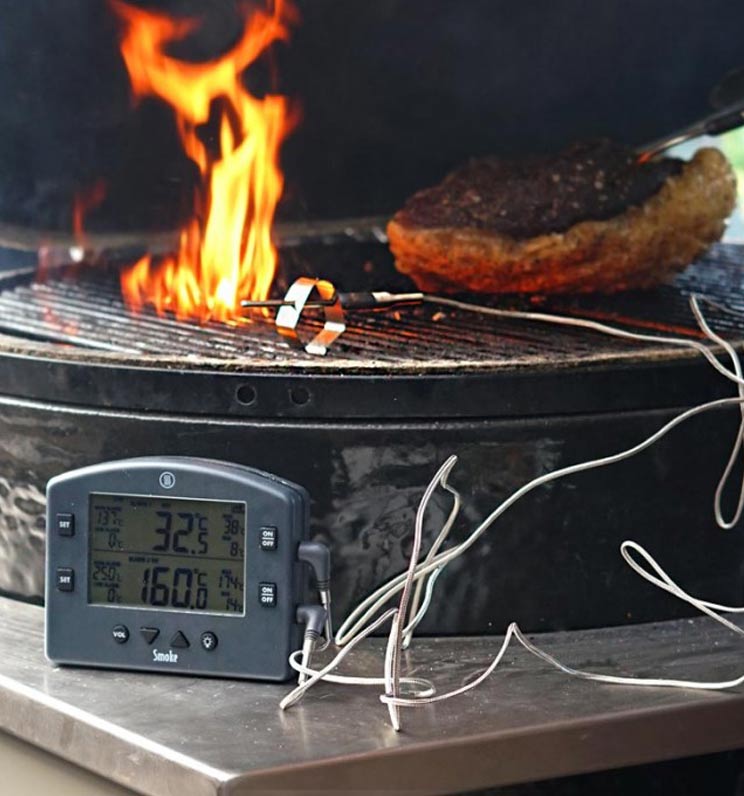
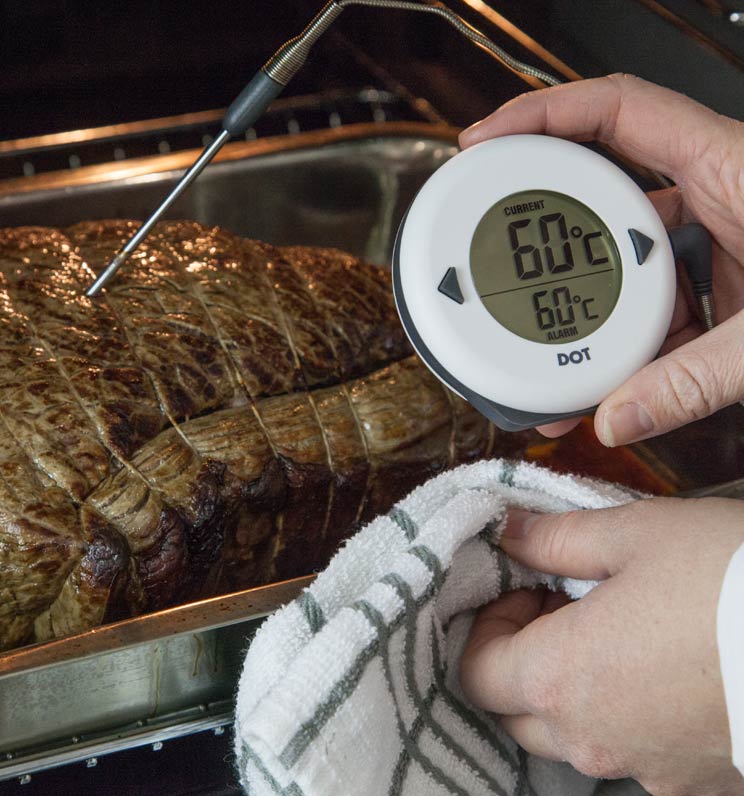
If you’re using a leave-in meat thermometer for oven roasting your Sunday lunch or smoking meat on the BBQ, you’ll need to insert your thermometer probe in exactly the same way, aiming for the thickest part and avoiding bones or gristle. Once you receive an alert to confirm that your meat is cooked, we recommend also using an instant-read thermometer to spot check the meat all over.
Why response time affects how to use a food thermometer
Different thermometers take varying lengths of time to settle on a reading. When using a meat thermometer with a slower response time, remember to give it time to provide an accurate reading. For thermometers with fast response times, such as our Thermapen One which reads the temperature in one second, it’s good to remember that often the food itself is changing in temperature as the thermometer is reading it. Therefore, a change in readings is simply a reflection of the food continuing to cook, even if it’s off the heat.
Top 3 thermometers for USING TO COOK meat
Thermapen ONE
The Thermapen One is the ultimate kitchen thermometer for the cook who knows that temperature, not time, is key to creating perfectly cooked food. With one second readings, it’s perfect for cooking steaks and other meats where they can become overdone in an instant, as well as spot checking larger joints to ensure they’ve come to temperature throughout. Not only is the Thermapen One ideal for meat, it can also be used for baking, confectionery and even reheating your leftovers and daily meals. It’s an essential tool in any kitchen.
DOT Digital Oven Thermometer
The DOT is perfect for cooking large joints of meat over long periods of time, without having to keep going back to your oven or BBQ to check the internal temperature. Simply set your desired temperature and wait for the alarm to sound. Voila, your Sunday roast will be perfectly done!
Smoke Wireless Barbecue Thermometer
The Smoke is for BBQ enthusiasts who like their meat cooked low and slow. With a probe for your meat and a probe for your pit, you have ultimate control over keeping your cook on track. Simple to use, it comes pre-paired with a wireless receiver that allows you to keep an eye on your meat from up to 300 feet away. Once the set temperature is reached, melt-in-the-mouth briskets, pulled pork and beef ribs will be yours.
Related posts
 How to Cook Christmas Turkey on a BBQ
How to Cook Christmas Turkey on a BBQ
 5 Best Cooking Christmas Gifts 2025
5 Best Cooking Christmas Gifts 2025
 Mike Tomkins' Ultimate Beef Wellington
Mike Tomkins' Ultimate Beef Wellington
 Christmas Marmalade Glazed Gammon
Christmas Marmalade Glazed Gammon
 How Long to Rest a Turkey
How Long to Rest a Turkey
Search
Categories
- Baking (35)
- BBQ (85)
- Autumn (14)
- Cheap Eats (9)
- Sweet Treats (38)
- Tips, Advice & Info (78)
- Christmas (36)
- Drinks (2)
- Thermapen Father's Day Recipes (18)
- Team Temperature (28)
- Date Night (37)
- Celebrations (20)
- Family & Kids (10)
- Fish (21)
- Low & Slow (13)
- Meat (142) click
-
Chefs (132)
click
- Kenny Tutt (16)
- Richard Holden (16)
- Barbechoo (7)
- Only Slaggin (1)
- SoSaSe Chocolat (1)
- Genevieve Taylor (5)
- Becky Excell (2)
- Charlotte Stirling-Reed (3)
- The Smokin Elk (13)
- Marcus Bawdon (2)
- Thermapen Chef (25)
- Edd Kimber (2)
- Humble Plates (7)
- Simon May (4)
- The Hedgecombers (3)
- Billy & Jack (4)
- Perfectly Preserved (3)
- Mike Tomkins (20)
- DJ BBQ (2)
- Nick Nairn (4)
- BBQ Jake (1)
- Air Fryer (9)
- RFX (6)
- Featured (3)
Latest recipes
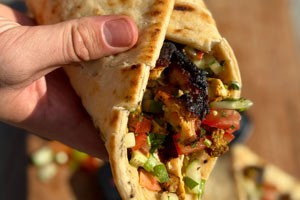
Rotisserie-cooked chicken shawarma, coated in a punchy yoghurt marinade. Pile into flatbreads with salad
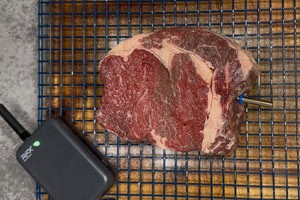
Ribeye is an amazing, flavour-packed cut of beef. Learn how to cook ribeye steak medium rare using the reverse sear...
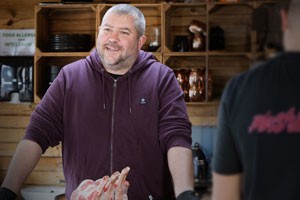
Elky Whittaker, aka The Smokin’ Elk, began barbecuing as a hobby 10 years ago. Today, he has 262k Instagram followers...
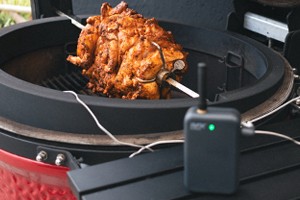
Juicy BBQ chicken shawarma recipe with homemade flatbreads and garlic sauce.
Archive
Popular Recipes
